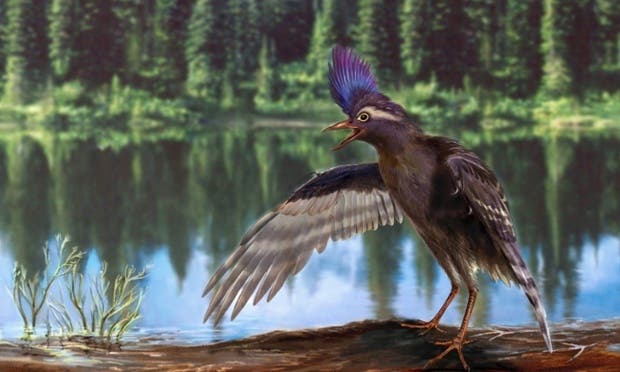A group of paleontologists have unearthed fossils preserved in pristine condition belonging to a new ancient avian species that lived some 130 million years ago. Dating suggests it’s the oldest ancestor to modern day birds found thus far, beating the previous record holder by about six million years. The findings also suggest that different bird groups were already well established and spread through the world even in the early Cretaceous.

The two specimens recovered from the siltstone slabs belong to a species called Archaeornithura meemannae. The ancient birds were likely the size of a sparrow and spotted a feathery crest. The tail was shaped like a fan, while the the wings were covered with overlapping feathers which likely offered some extra lift. While some dinosaurs of the time had feathers either to keep warm or to increase sex appeal, Archaeornithura clearly made use of the feathers to fly.
“This finding is important because it comes from such old rocks and the species is already quite advanced in its group,” said Gareth Dyke, a paleontologist at the University of Southampton. “It suggests that in the early Cretaceous, all the major groups of birds had already evolved and diversified.”
Min Wang at the Chinese Academy of Sciences was among the team that first cracked open the rocks that revealed the ancient bones, which were later analyzed at the Tianyu Natural History Museum of Shandong.

“All living birds belong to a group called the ornithuromorpha, and until now the oldest species known was 125 million years old. This new species comes from deposits that are more than 130 million years old, so it pushes back that date by at least 5 million years,” Wang told the Guardian.
“The feathers are really beautiful. It is incredible how they were preserved so well for 130 million years,” he added.
The stubby feathers used to cover most of the bird’s body, apart from some odd areas near the legs. These bald patches lends us to believe Archaeornithura likely wondered the vicinity of legs. The findings were reported in the journal Nature Communications.
Was this helpful?



